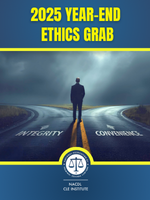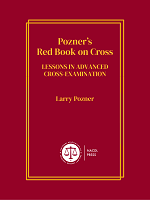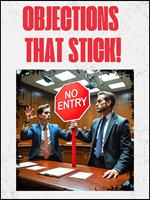Access to The Champion archive is one of many exclusive member benefits. It’s normally restricted to just NACDL members. However, this content, and others like it, is available to everyone in order to educate the public on why criminal justice reform is a necessity.
Advocacy groups have long decried the nation’s draconian sentencing policies.1 For more than a generation, NACDL has struggled to reverse the tyranny of mandatory minimums and the crack/cocaine disparity, even while opposing the cascade of new proposals to establish ever more severe penalties. But it is no longer NACDL and other outstanding advocacy groups that are calling for reform. Leaders in both the executive and legislative branches are now cautiously joining the chorus. The Fair Sentencing Act, which reduced the federal crack calculations somewhat, was a first step in the right direction.2 Now, with leadership coming from the top of the Justice Department, and remarkable bipartisan support emerging in Congress, there is real hope that America may finally begin to undo the plague of mass incarceration.
In recent months, Attorney General Eric Holder has added his voice to the calls for reform. Last August, in his address to the American Bar Association’s House of Delegates, Mr. Holder observed that “[i]t’s clear … that too many Americans go to too many prisons for far too long, for no truly good law enforcement reason.”3 In that same speech, the attorney general noted that the federal prison population increased by 800 percent since 1980, while the population increased by one-third. He also cited the now all too familiar statistic that the United States leads the world in incarceration, imprisoning 25 percent of all the world’s prisoners with just five percent of the world population.
Perhaps most significantly, Attorney General Holder also provided official acknowledgement of one of the most disgraceful aspects of the American infatuation with incarceration: its disparate effect on minorities. Noting that “unwarranted disparities are far too common” and that “young black and Latino men are disproportionately likely to become involved in our criminal justice system[,]” Mr. Holder also observed that black male offenders received sentences nearly 20 percent longer than those impose on white males convicted of similar crimes.4 Among the remedial steps announced by the attorney general in that speech was a modification in the Justice Department’s charging policies to forgo the application of draconian mandatory minimum sentences in less severe cases.5
It remains to be seen whether the new charging policy will in fact take hold throughout the various federal districts. But, an even more hopeful development has emerged from Congress. The proposed Smarter Sentencing Act, which would make the Fair Sentencing Act retroactive and significantly reduce mandatory penalties for certain controlled substance offenses, advanced out of the Judiciary Committee with strong bipartisan support.6 The legislation has strong support from the Justice Department.7 Indeed, as further evidence of DOJ’s stated determination to restore some measure of fairness to national sentencing practices, Deputy Attorney General James Cole called for greater use of the president’s pardon power to commute lengthy sentences for low-level, nonviolent drug offenders. Referencing President Obama’s recent commutation of the sentences of eight men and women sentenced under harsh mandatory minimums, the deputy attorney general declared:
But the president’s grant of commutations for these eight individuals is only a first step. There is more to be done, because there are others like the eight who were granted clemency. There are more low-level, nonviolent drug offenders who remain in prison, and who would likely have received a substantially lower sentences if convicted of precisely the same offenses today.
Mr. Cole went on to call upon bar groups to help identify appropriate cases for clemency review,8 spawning hope for thousands who are needlessly languishing in prisons.
Despite all these voices calling for reform, there is one voice missing. At least for some prosecutors, the thought of relinquishing the bludgeon of mandatory minimum sentences remains anathema. In a Jan. 27, 2014, letter to Attorney General Holder, the National Association of Assistant United States Attorneys (NAAUSA) expressed concern over Mr. Holder’s support for legislation to relax mandatory minimums.9 Rejecting the notion that the federal system of justice is broken or in need of reconstruction, the NAAUSA asserted that “we consider the current federal mandatory minimum sentence framework as well-constructed and well worth preserving.”10
While there is no way to determine from the letter or any posting on the NAAUSA website how widespread the views expressed in the letter are among the nation’s federal prosecutors, given the vast discretion they wield it is disheartening to see any resistance to the Justice Department’s reform efforts from within their ranks. NAAUSA’s letter did not even acknowledge the current sentencing framework’s disparate impact on minority populations. It is hard to imagine any component of the criminal justice system not concerned with the moral and financial costs of mass incarceration.
A close reading of the NAAUSA letter reveals the true motivation for its opposition to reform: the unapologetic and brazen embrace of the trial penalty. In singing a litany of praise for mandatory minimums, the prosecutors declare, “They [mandatory minimums] provide us leverage to secure cooperation from defendants.” And later they proclaim that “mandatory minimums are a critical tool in persuading defendants to cooperate. . . .”
So there you have it: a candid admission by the prosecutorial bar that mandatory minimums are valued as a prosecutorial hammer to induce guilty pleas and cooperation. Let those who dare to test the prosecution’s case by availing themselves of the constitutional right to a trial by jury face virtual annihilation if they are convicted after trial. Never mind the fact that faced with the prospect of geometrically increased penalties, even an innocent person will rationally agree to cooperate.11 Forget the fact that these forces can impel an individual to falsely implicate others. And certainly, pay no attention to the fact that cooperators are often turned loose into communities to induce vulnerable, otherwise law abiding people to commit crime.
There may, however, be a silver lining to the prosecutors’ position. First, with the transparent acknowledgement that severe penalties are used for ulterior purposes, it is easier to make the case that they are objectively unfair and disproportionate to the crime or the offender. Second, it may help to fuel a national debate about the trial penalty, the routine piling on of penalties that have virtually eliminated trials and turned the criminal justice system into a giant plea mill.12 To the extent that mandatory minimum sentences are wielded to shield the government from having to prove up their charges, the nation has invited tyranny. And that tyranny is evident in the appalling incarceration statistics that has led even the U.S. Department of Justice to support reform.
Notes
- See, e.g., American Civil Liberties Union, A Living Death: Life Without Parole for Nonviolent Offenses (2013), available at https://www.aclu.org/sites/default/files/assets/111813-lwop-complete-report.pdf (last visited Feb. 18, 2014); The Sentencing Project, Life Goes On: The Historic Rise in Life Sentences in America (2013), available at http://sentencingproject.org/doc/publications/inc_Life%20Goes%20On%202013.pdf (last visited Feb. 18, 2014).
- Under the Fair Sentencing Act of 2010, the crack-to-powder ratio for sentencing purposes was reduced from 100 to 1 down to 18 to 1. Accordingly, where 5 grams of crack cocaine previously triggered the same penalty as 500 grams of powder cocaine, the current 18 to 1 ratio means that it takes 28 grams of crack cocaine to trigger the same penalty as 500 grams of powder cocaine. Fair Sentencing Act of 2010, Pub. L. No. 111-220, 124 Stat. 2372 (2010).
- U.S. Attorney General EricHolder, Remarks at the Annual Meeting of the American Bar Association’s House of Delegates (2013), available at http://www.justice.gov/iso/opa/ag/speeches/2013/ag-speech-130812.html (last visited Feb. 18, 2014).
- Id., citing U.S. Sentencing Commission, Report on the Continuing Impact of United States v. Booker on Federal Sentencing (2012), available at http://www.ussc.gov/Legislative_and_Public_Affairs/Congressional_Testimony_and_Reports/Booker_Reports/2012_Booker/index.cfm (last visited Feb. 18, 2014).
- Memorandum from U.S. Attorney General Eric Holder to U.S. Attorneys and Assistant Attorney General for the Criminal Division, Department Policy on Charging Mandatory Minimum Sentences and Recidivist Enhancements in Certain Drug Cases (Aug. 12, 2013), available at http://www.justice.gov/oip/docs/ag-memo-department-policypon-charging-mandatory-minimum-sentences-recidivist-enhancements-in-certain-drugcases.pdf (last visited Feb. 18, 2014).
- The bill is S.1410: Smarter Sentencing Act of 2013, jointly sponsored by Sen. Dick Durbin (D-IL) and Sen. Mike Lee (R-UT). The Senate bill was reported out of the Judiciary Committee by a 13-5 vote. A companion bill, H.R. 3382, has been introduced in the House, with bipartisan support by Reps. Raul Labrador (R-ID) and Bobby Scott (D-VA).
- U.S. Attorney General Eric Holder, Remarks on Criminal Justice Reform at Georgetown University Law Center (2014), available at http://www.justice.gov/iso/opa/ag/speeches/2014/ag-speech-140211.html (last visited Feb. 18, 2014).
- NACDL is working with other groups to explore the ramifications of Mr. Cole’s remarks to determine whether the Justice Department can commit the resources and ensure a process that will justify a major national pro bono effort. NACDL members will be notified as soon as the scope of the DOJ initiative is clarified.
- The letter was authored by NAAUSA President Robert Guy Guthrie, available at www.naausa.org/news/146.pdf (last visited Feb. 16, 2014).
- Id.
- See Jamie Felner, Human Rights Watch, An Offer You Can’t Refuse: How US Federal Prosecutors Force Drug Defendants to Plead Guilty (2013), available at http://www.hrw.org/reports/2013/12/05/offer-you-can-t-refuse (last visited Feb. 18, 2014).
- NACDL is now moving beyond Jamie Felner’s Human Rights Watch report to conduct a more expansive examination of the federal trial penalty in all cases other than controlled substance offenses. Readers who have examples are encouraged to submit their cases for inclusion in the study by writing to trialpenalty@nacdl.org.
About the Author
Norman L. Reimer is NACDL’s Executive Director and Publisher of The Champion.













